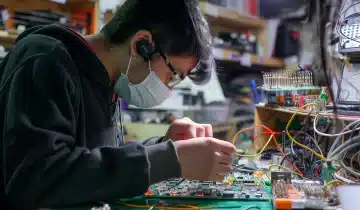Seat belts are one of the most important parts of an automobile, as they help protect your body from any accidents that you and other occupants in the vehicle might face. There are a variety of mechanisms that help out with the effectiveness of the seat belt. One of these is the retraction mechanism.
Car seat belts were made to retract in order to hold back the body in case of a crash or any sudden motions that can cause the body to lurch forward. There’s also the convenience factor every time you unlock the belt, as it ideally goes back to the retractor almost automatically.
Unfortunately, some people will run into some trouble where their seat belts are slow in retracting. Not only is it annoying as you manually feed the belt back to the retractor, but there are also safety issues in case of a collision.
When encountering this problem, be sure to go to a seat belt repair service. They should be able to fix the retraction issue in a jiffy. If you’re curious about how the process goes, continue reading this guide to learn more.
Assessing the Problem
Two things that can cause slow seatbelt retraction are dirt or damage. Oftentimes, it could even be both, as debris can cause disfiguration in certain parts of the seat belt. The most relevant parts that you and your seat belt expert should check for defects are the:
- Webbing. The webbing or the fabric of the seat belt may start accumulating filth from the user, though it can also come from other factors as well. The webbing can start becoming less malleable, making the seat belt tougher to retract.
- Plastic Loop. The loop, which helps with attaching the belt over your shoulder, is also vulnerable to dirt. There is also a chance that this part of the seat belt may just need some lubrication too.
- Belt Retractor. The belt retractor is the most significant tool in the seat belt’s whole retraction mechanism. The retractor may require a bit of cleaning as any dirt collected by the webbing will go into it as well, though there’s also a possibility that it’s just broken.
Attending to the Issue
Once the problem is assessed and identified, it’s time to fix it. One of the first things that will have to be done will be disassembling the affected part if necessary. The webbing will be easy as it just has to be pulled out, while the loop and retractor will be more difficult.
When everything is exposed, thorough cleaning and lubrication will be done in order to fix the problem. Only industry-grade cleaners should be used to avoid further damages to your seat belt.
Replacing The Seat Belt
There may be cases wherein certain seat belt parts like the webbing will be defective beyond repair. In those cases, it may be necessary to get a replacement instead to ensure that the seat belt will still work.
Conclusion
Avoid skipping the repairs or replacements so that you don’t compromise the condition of your seat belt. The retraction mechanism must be fixed for you to feel optimally safe and secure in your vehicle.
In need of a seat belt repair? Safety Restore is the world’s leader in post-accident restorations, specializing in seat belt repairs, webbing replacements, and more. Get in touch with us now!


